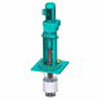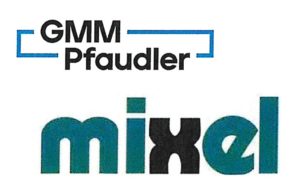Methanation process for sludge applications
The methanization process for sludge from wastewater treatment plants or waste produced by local communities and farms (green waste, slurry, manure, kitchen waste, etc.) enables:
- to reduce their volume by 30 to 40%
- to sanitize and deodorize them.
Anaerobic digestion generates a biogas composed mainly of methane and carbon dioxide which, after treatment, is recovered for energy production (electricity for example).
Sludge digestion is a major step in this process. Digestion is carried out in a heated tank (digester or methanizer), where a stirrer rotates to, first, improve contact between the organic matter and the bacteria and, then, facilitate the rise of the gas produced. This biogas is recovered at the roof of the tank. The digestates are then dehydrated and used in agriculture.
Agitators to suit your needs
The agitators of the DIGIMIX range are specially designed to be integrated into the methanization process and equip digesters or digestion tanks.
The DIGIMIX has specific technical characteristics:
- vertical agitator with axial flow, double deck of mobiles
- guidance system
- specific turret for guiding very long agitation shaft (up to 20 m)
- sealing by hydraulic seal
Our references in the methanation process
Major local and international players integrate Mixel agitators into their methanation processes, by installing them on sludge digestion tanks or digesters.
These are Véolia, KDM, Biwater, Naskeo, France Biogaz valorisation, Suez-Degremont, VaTech Wabag, QINGDAO ZHONG HAI ENVIRONMENT, Zoomlion.
Contact us now via our online form to tell us about your heat transfer project.Contact us now via our online form to tell us about your heat transfer project.

 The art of mixing
The art of mixing 







